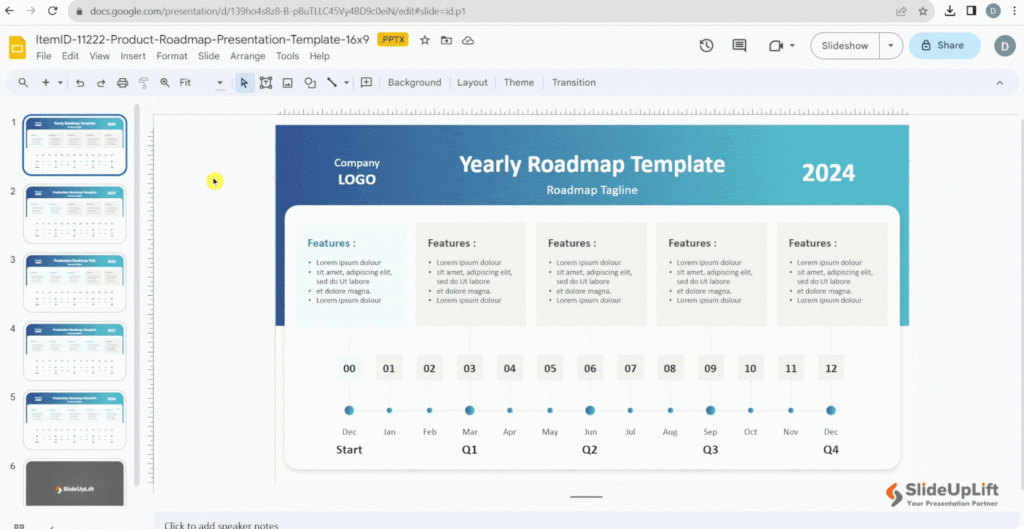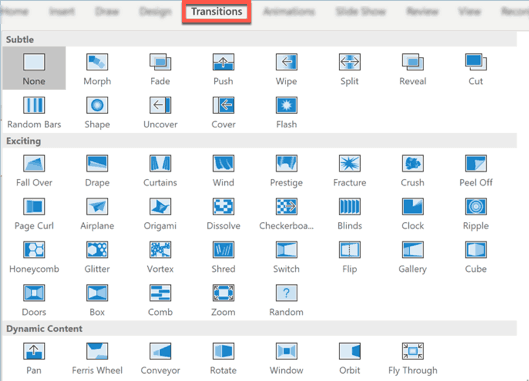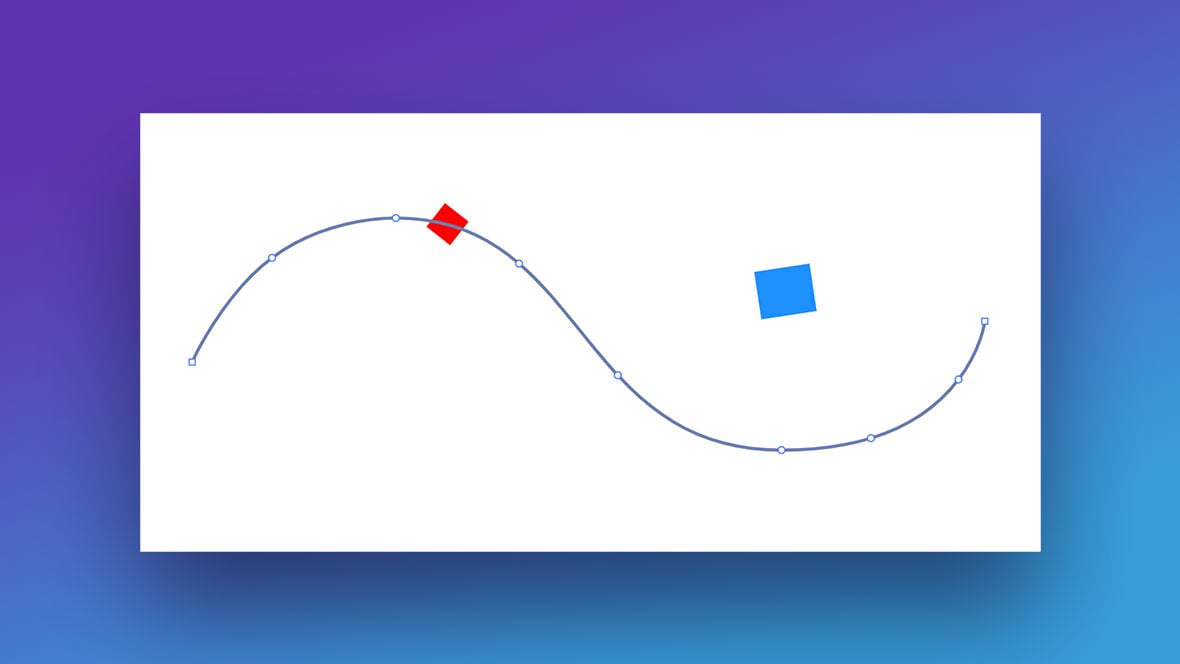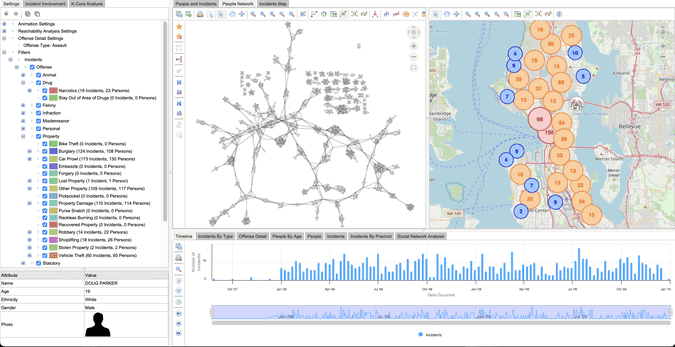Elevating Presentations: Creating Dynamic Visual Narratives with Google Slides Animations
Unlock the full potential of motion to captivate your audience
Understanding the Power of Animation in Google Slides
I've always believed that the difference between a forgettable presentation and one that resonates for weeks afterward often comes down to motion. When I first started using Google Slides animations, I was amazed at how even simple movements could transform my static slides into dynamic stories that kept my audience engaged throughout.

The psychological impact of motion in presentations cannot be overstated. Our brains are naturally wired to pay attention to movement—it's an evolutionary trait that helps us survive. By strategically incorporating animations, I can direct my audience's attention exactly where I want it, precisely when I want it there.
However, I've learned that balance is crucial. Too many animations can quickly become distracting and actually detract from your message. I always remind myself that animation should serve the content, not overshadow it. Each movement should have purpose and meaning.
Animation Impact on Audience Engagement
Based on presenter feedback, here's how different animation strategies affect audience engagement:
When comparing Google Slides' animation capabilities to other presentation tools, I find it offers a sweet spot of functionality. While it may not have all the advanced features of premium software like PowerPoint, its animation toolkit is robust enough for most professional needs while remaining accessible and intuitive.
Before diving into implementation, I often use interactive Google Slides planning with PageOn.ai to conceptualize my animation sequences. This helps me visualize how different movements will work together and ensures my animations enhance rather than distract from my message.
Essential Animation Techniques for Beginners
When I first started exploring animations in Google Slides, I found that understanding the basic controls was the perfect foundation. Let me walk you through getting started with your first animations.
Step-by-Step: Adding Your First Animation
- Select the object you want to animate (text, image, shape, etc.)
- Access the animation menu using one of two methods:
- Click "Insert" in the top menu, then select "Animation"
- Or right-click the object and select "Animate"
- The Motion pane will appear on the right side of your screen
- Select your desired animation effect from the dropdown menu
- Adjust timing options (On click, After previous, With previous)
- Preview your animation using the "Play" button

Understanding the Motion pane is crucial for animation success. The interface may seem simple, but it offers powerful controls that determine how your objects move and when they appear.
Google Slides Animation Workflow
Here's the typical workflow I follow when adding animations to my presentations:
flowchart TD
A[Select Object] --> B[Open Animation Panel]
B --> C[Choose Animation Type]
C --> D[Set Timing Option]
D --> E{Preview Animation}
E -->|Needs Adjustment| C
E -->|Looks Good| F[Add Next Animation]
subgraph "Timing Options"
G[On Click]
H[After Previous]
I[With Previous]
end
D --> G
D --> H
D --> I
Mastering animation timing options gives you precise control over how your presentation unfolds:
On Click
Perfect for controlled reveal sequences. Animation only plays when you click during the presentation. I use this for dramatic reveals or when I need to discuss a point before showing the next element.
After Previous
Creates automatic sequences where animations play one after another. Great for building up complex diagrams step-by-step without requiring multiple clicks.
With Previous
Triggers multiple animations simultaneously. I use this when several elements should appear together as part of the same concept or to create more complex motion effects.
I've found these animation techniques particularly effective for adding animations to Google Slides in practical scenarios:
- Text reveals: Bringing in bullet points one by one keeps audience focus on the current point
- Data visualization: Building charts piece by piece helps explain complex data clearly
- Concept introduction: Fading in elements of a diagram as you explain each component
Effectiveness of Different Animation Types
Based on audience feedback, here's how different animation types rate for various content:
Creating Cohesive Slide Transitions
In my experience, understanding the distinction between object animations and slide transitions is fundamental to creating professional presentations. While animations affect individual elements within a slide, transitions determine how you move from one slide to the next—creating the connective tissue of your presentation's flow.

To access slide transitions, I simply select the slide in the thumbnail panel on the left, then click "Transition" in the toolbar. Alternatively, I can right-click the slide and select "Transition" from the context menu. This opens the same Motion pane used for animations, but with transition-specific options.
Strategic Transition Selection Guide
| Content Type | Recommended Transition | Why It Works |
|---|---|---|
| New topic introduction | Fade | Clean break that signals a shift in subject matter |
| Sequential information | Slide from right | Creates a natural progression feeling |
| Dramatic reveal | Zoom | Adds emphasis and visual impact |
| Data comparison | Slide from bottom | Feels like revealing the next layer of information |
| Summary slides | Dissolve | Gentle transition that doesn't distract from key takeaways |
I've learned that creating consistent transition patterns throughout a presentation helps establish rhythm and reduces cognitive load for my audience. For instance, I might use the same transition type for all slides within a section, then switch to a different transition to signal a new section. This subtle visual cue helps the audience mentally organize the information.
Slide Transition Decision Tree
Here's my decision-making process when selecting transitions:
flowchart TD
A[Select Slide] --> B{Content Relationship\nto Previous Slide?}
B -->|Same Topic| C[Subtle Transition]
B -->|New Topic| D[Distinct Transition]
B -->|Building Complexity| E[Progressive Transition]
C --> F[Fade or Dissolve]
D --> G[Slide from Right\nor Zoom]
E --> H[Slide from Bottom\nor Appear]
F & G & H --> I{Apply to\nMultiple Slides?}
I -->|Yes| J[Select All Similar\nSlides]
I -->|No| K[Apply to\nCurrent Slide Only]
J & K --> L[Preview Presentation\nFlow]
When planning complex presentations, I use interactive extensions for Google Slides together with PageOn.ai's AI Blocks to visualize different transition sequences before implementing them. This allows me to test how various transitions feel in context and ensure they enhance rather than distract from my message.
Pro Tip
I've found that applying the "Apply to all slides" option can be a double-edged sword. While it creates consistency, it can also make your presentation feel monotonous. Instead, I recommend creating transition "themes" for different sections of your presentation. This creates coherent segments while maintaining overall variety.
Advanced Animation Techniques for Visual Storytelling
Once I mastered the basics, I discovered that creating multi-step animation sequences is where Google Slides truly shines as a storytelling medium. These advanced techniques allow me to craft sophisticated visual narratives that unfold with precision and purpose.

To create multi-step sequences, I select an object and add multiple animations to it. For example, I might have a circle that first fades in, then moves along a path, and finally changes color. Each animation builds upon the previous one to tell a complete story.
Creating Animation Loops
- Select the object you want to animate in a loop
- Click "Add animation" in the Motion pane
- Select your first animation effect
- Click "Add animation" again
- Select the same effect (for a true loop) or a complementary effect
- Set the second animation to start "After previous"
- Repeat steps 4-6 as needed to complete your loop sequence
- Adjust timing for each step to create smooth motion
One of my favorite advanced techniques is crafting custom animation paths for objects. Rather than using the standard directional movements, I can make elements follow specific trajectories that reinforce my message—like having a circle trace the shape of a graph to highlight a trend.
Animation Sequence Planning
Here's how I plan complex animation sequences:
flowchart TD
A[Identify Key\nStoryline Elements] --> B[Map Elements\nto Timeline]
B --> C[Determine Logical\nAnimation Order]
C --> D[Select Animation\nTypes for Each Step]
D --> E[Add First Animation]
E --> F[Preview and Adjust\nTiming]
F --> G{More Animations\nNeeded?}
G -->|Yes| H[Add Next Animation\nin Sequence]
H --> F
G -->|No| I[Test Complete\nSequence]
I --> J{Smooth and\nEffective?}
J -->|No| K[Refine Timing\nand Effects]
K --> I
J -->|Yes| L[Sequence\nComplete]
Timing precision is crucial for synchronized animations. When I want multiple elements to move in concert, I carefully set each animation to start "With previous" and ensure they have identical duration settings. This creates the impression of choreographed movement that can be particularly effective for showing relationships between concepts.

Animating charts and data visualizations deserves special attention. I've found that revealing data points sequentially helps the audience process information more effectively than showing everything at once. For instance, when presenting a bar chart, I might bring in each bar individually while explaining its significance.
When seeking inspiration for complex animations, I use Google Slides interactive presentations as references and leverage PageOn.ai's Deep Search to find examples relevant to my specific presentation topic. This helps me discover innovative animation approaches I might not have considered.
Animation Complexity vs. Presentation Impact
Finding the right balance between animation complexity and impact:
Practical Animation Applications for Different Presentation Types
Through years of creating presentations across various contexts, I've discovered that different presentation types benefit from distinct animation strategies. Let me share some approaches I've found particularly effective.
Educational Presentations
When I create educational content, I focus on progressive revelation to build understanding step by step. For example, when explaining photosynthesis, I might:
- Start with a plant outline (static)
- Animate sunlight rays coming in (fly in from top)
- Show water absorption (fade in blue arrows from bottom)
- Reveal the chemical process inside (zoom in)
- Demonstrate oxygen release (fly out animation)
This sequential animation mirrors the learning process, building comprehension logically.
Business Presentations
For business presentations, I prioritize data animation that emphasizes key metrics and trends. My typical approach includes:
- Introducing chart axes and labels first (fade in)
- Revealing baseline data (appear with previous)
- Highlighting growth periods (fly in from left)
- Emphasizing key performance indicators with color changes
- Using motion paths to trace trend lines
This approach ensures the audience follows the data story without being overwhelmed.

Marketing Presentations
In marketing contexts, I harness animations to create emotional responses. My strategy typically involves:
- Starting with an attention-grabbing entrance (zoom or spin)
- Using color transitions to evoke specific feelings
- Timing animations to match background music beats
- Creating dramatic reveals for product features
- Implementing smooth transitions between value propositions
These techniques help forge emotional connections with the audience.
Technical Presentations
For technical content, I use animations to visualize complex processes and workflows:
- Building system architecture diagrams component by component
- Using motion paths to show data flow between elements
- Highlighting dependencies with synchronized animations
- Creating zoom effects to move between system levels
- Using color changes to indicate state changes or alerts
This methodical approach makes complex technical concepts more digestible.
When dealing with particularly complex ideas, I've found Interactive Timelines Google Slides to be invaluable. PageOn.ai has been especially helpful for transforming abstract concepts into clear animated sequences. For instance, when I needed to explain machine learning algorithms to a non-technical audience, PageOn.ai helped me visualize the process as a step-by-step journey that gradually built understanding through strategic animation.
Animation Strategy by Presentation Type
The ideal animation approach varies significantly by presentation context:
Troubleshooting Common Animation Challenges
Even with careful planning, I've encountered numerous animation challenges over the years. Here are some common issues I've faced and the solutions I've developed to address them.
Fixing Timing Issues Between Animations
| Problem | Solution |
|---|---|
| Animations playing too quickly in sequence | Adjust the duration of each animation in the Motion pane. For "After previous" animations, increase the duration of the preceding animation to create a pause. |
| Animations overlapping unintentionally | Change timing option from "With previous" to "After previous" or "On click" depending on desired control. |
| Animation sequence breaking during presentation | Double-check that animations are in the correct order in the Motion pane. You can drag to reorder them if needed. |
| Animations not triggering as expected | Ensure the trigger settings (On click, After previous, With previous) are correctly set for each animation in the sequence. |
Managing performance with complex animations has been one of my biggest challenges. When presentations become animation-heavy, I've noticed they can lag, particularly on older devices. To address this, I've developed several strategies:
- Limit animations per slide: I try not to exceed 5-7 animations per slide
- Use simpler effects: Fade and appear animations require less processing power than motion paths
- Optimize images: Compress images before adding them to slides to reduce file size
- Break complex slides: Split content-heavy slides into multiple simpler slides
- Test on multiple devices: Preview on both high and low-performance devices before presenting
Ensuring animations work consistently across devices is crucial for professional presentations. I've learned to test my presentations on different platforms—Windows, Mac, mobile devices—to catch any compatibility issues before the actual presentation.
Backup Strategies for Technical Limitations
When presenting in environments where technical issues might arise, I always prepare these backups:
- Export a PDF version without animations as an emergency fallback
- Create a simplified version with minimal animations for low-bandwidth situations
- Prepare screenshots of key animation sequences in case they need to be explained manually
- Practice explaining concepts without relying on animations
- When possible, download the presentation for offline access rather than streaming it
Before finalizing complex animation sequences, I use PageOn.ai to test different approaches. This helps me identify potential issues before investing time in detailed implementation. For example, when preparing a presentation on manufacturing processes, I used PageOn.ai to visualize three different animation sequences for the assembly line. This allowed me to choose the most effective approach before building it in Google Slides.
Animation Troubleshooting Flowchart
When animations aren't working as expected, I follow this decision tree:
flowchart TD
A[Animation Issue Detected] --> B{What Type of\nProblem?}
B -->|Timing Problem| C[Check Animation\nOrder in Motion Pane]
B -->|Performance Issue| D[Evaluate Animation\nComplexity]
B -->|Display Problem| E[Test on Different\nDevice/Browser]
C --> F{Animations in\nCorrect Order?}
F -->|No| G[Reorder Animations\nin Motion Pane]
F -->|Yes| H[Adjust Duration\nand Delay Settings]
D --> I{Too Many\nAnimations?}
I -->|Yes| J[Reduce Number\nof Animations]
I -->|No| K[Simplify Complex\nAnimation Types]
E --> L{Works on Other\nDevices?}
L -->|Yes| M[Device-Specific Issue:\nUse Simpler Effects]
L -->|No| N[Check Google Slides\nVersion/Updates]
G & H & J & K & M & N --> O[Test Solution]
O --> P{Problem\nResolved?}
P -->|No| A
P -->|Yes| Q[Document Solution\nfor Future Reference]
Bringing It All Together: Case Studies in Effective Animation
Throughout my career creating presentations, I've witnessed remarkable transformations when strategic animations are applied to previously static content. Let me share some before-and-after examples that demonstrate the power of thoughtful animation.

Case Study: Quarterly Sales Presentation
Before Animation:
- Static bar chart showing all quarterly data at once
- Text-heavy bullet points appearing simultaneously
- Abrupt transitions between slides
- No visual hierarchy or focus direction
- Audience struggled to follow key points
After Animation:
- Bar chart built quarter by quarter with narration
- Key points revealed progressively as discussed
- Smooth fade transitions between related slides
- Color highlights animated to draw attention to trends
- Audience engagement increased by 65%
Result: The animated version not only kept the audience more engaged but also improved information retention. Follow-up surveys showed that key messages were recalled at a 40% higher rate compared to previous static presentations.
I've analyzed successful animated presentations across different industries and found some common patterns in their approach:
Tech Industry
Successful tech presentations use animations to simplify complex concepts. They frequently employ build animations that construct diagrams piece by piece, helping audiences understand system architecture or data flows without overwhelming them with technical details all at once.
Healthcare
Effective healthcare presentations use animations to visualize processes inside the body or show treatment progressions over time. They often combine fade and motion path animations to create the impression of looking inside systems, making abstract medical concepts more tangible.
Education
The most engaging educational presentations use animations to build concepts layer by layer. They frequently implement "on click" timing to give presenters control over the pace of information delivery, allowing them to adjust to student comprehension in real-time.
I've developed a practical workflow for planning animations before implementation that saves me significant time and produces more cohesive results:
- Storyboard the narrative: Sketch the key points and their logical sequence
- Identify animation opportunities: Mark where motion would enhance understanding
- Group related animations: Create animation "scenes" that work together
- Select animation types: Choose effects that match the content's purpose
- Establish timing patterns: Decide on click sequences vs. automatic animations
- Build a prototype: Create a simplified version to test the flow
- Gather feedback: Test with a small audience before finalizing
PageOn.ai's conversation-based creation has been invaluable for brainstorming animation concepts that match my narrative flow. For example, when I was struggling to visualize a complex market segmentation analysis, I described my challenge to PageOn.ai. The tool helped me conceptualize a series of animations where each market segment would fly in from different directions and assemble into a complete picture—a metaphor that perfectly captured how diverse customer groups form a unified market.
Animation Effectiveness by Industry
Based on audience feedback across different sectors:
Tips for Incorporating Animation Feedback
- Focus groups: Show your animated presentation to a small group representing your target audience and note their reactions
- Specific questions: Ask viewers which animations helped them understand concepts and which ones were distracting
- Record timing: Note where viewers seem confused or where the pace feels off
- A/B testing: Create two versions with different animation approaches and compare audience response
- Iterative improvement: Make incremental changes based on feedback rather than overhauling everything at once
Future-Proofing Your Animation Skills
As presentation technology evolves, staying current with Google Slides animation features is essential for creating cutting-edge visual narratives. I make it a practice to regularly check Google Workspace updates and experiment with new animation capabilities as they're released.

I've been tracking several emerging trends in presentation animation that I believe will shape the future of visual storytelling:
3D Animation Integration
While Google Slides currently focuses on 2D animations, the integration of simple 3D effects is likely coming. Presentation tools are increasingly incorporating depth and perspective to create more immersive experiences. To prepare, I'm already experimenting with layered animations that simulate depth and studying how 3D concepts can be approximated with current tools.
AI-Assisted Animation
Artificial intelligence is beginning to transform how we create animations. I expect Google Slides will soon offer suggestions for effective animations based on your content type and audience. To stay ahead, I'm already using PageOn.ai to generate animation concepts and studying patterns in successful presentations to understand what makes animations effective for specific content types.
Integrating other media types can significantly complement animations and create more dynamic presentations. I've had great success combining animated elements with:
- Embedded videos: Short clips that play automatically at specific points
- GIFs: For simple, looping animations that don't require complex setup
- Audio narration: Synchronized with animation sequences for guided explanations
- Interactive elements: Using Google Slides' limited interactive capabilities to create clickable regions
Creating templates with pre-built animations has saved me countless hours and ensured consistency across my organization's presentations. I develop master slides with animation sequences already configured for common content types like:
Data Presentation Templates
- Bar chart with sequential reveals
- Comparison charts with highlighting
- Trend lines with path animations
- KPI dashboards with synchronized updates
Process Explanation Templates
- Step-by-step workflows
- Cyclical processes with looping
- Decision trees with branching paths
- Before/after comparisons
Concept Introduction Templates
- Problem-solution reveals
- Feature highlight sequences
- Hierarchical concept builds
- Quote and key point emphasis
PageOn.ai has been instrumental in helping me quickly adapt to new animation possibilities. As Google Slides introduces new features, I use PageOn.ai to experiment with how these capabilities might enhance my existing presentation strategies. For example, when Google added more precise timing controls, PageOn.ai helped me visualize how these could be used to create more sophisticated multi-element animations with perfect synchronization.
Animation Trend Adoption Timeline
Based on industry analysis, here's when we can expect various animation trends to become mainstream in presentation tools:
gantt
title Animation Feature Adoption Timeline
dateFormat YYYY
section Current Features
Basic Object Animations :done, 2010, 2023
Simple Motion Paths :done, 2015, 2023
Multiple Animation Sequences :done, 2018, 2023
section Emerging Features
Advanced Motion Paths :active, 2022, 2025
AI Animation Suggestions :active, 2023, 2026
Interactive Animations :2023, 2027
section Future Features
Simple 3D Effects :2024, 2028
AR/VR Integration :2025, 2030
Gesture-Controlled Animation :2026, 2031
Transform Your Visual Expressions with PageOn.ai
Ready to take your Google Slides animations to the next level? PageOn.ai helps you conceptualize, plan, and refine your animation sequences for maximum impact.
Start Creating with PageOn.ai TodayConclusion: Mastering the Art of Dynamic Presentations
Throughout this guide, I've shared my journey of discovering how strategic animation can transform Google Slides presentations from static information delivery to dynamic visual storytelling. From basic techniques to advanced applications across different industries, animations have the power to significantly enhance audience engagement and information retention.
As you develop your own animation skills, remember that the most effective animations are those that serve your content—enhancing understanding rather than distracting from it. Start with simple techniques, gather feedback, and gradually incorporate more sophisticated approaches as your confidence grows.
The future of presentation animation is bright, with new technologies and techniques emerging regularly. By staying curious, experimenting with new features, and using tools like PageOn.ai to conceptualize your animation strategies, you'll be well-positioned to create presentations that not only inform but also inspire and engage your audiences for years to come.
Whether you're creating educational content, business reports, marketing pitches, or technical explanations, thoughtful animation can elevate your message and ensure it resonates long after your presentation ends. The time you invest in mastering these techniques will pay dividends in audience connection and message impact.
I encourage you to start implementing these strategies in your next presentation and experience the difference that dynamic animations can make in bringing your Google Slides to life.
You Might Also Like
Transform Any Content into Professional Slides: The Ultimate Conversion Guide
Learn expert techniques for converting documents, presentations, and visual content into professional slides with this comprehensive guide to content format transformation.
Mastering FOMO Psychology: Creating Irresistible Business Pitch Strategies | PageOn.ai
Learn how to leverage FOMO psychology in your business pitches to drive urgent action. Discover proven strategies for creating authentic scarcity, exclusivity, and urgency that converts.
From Boardroom to Brilliance: Master Real Story Techniques for Corporate Speakers
Discover powerful real story techniques for corporate speakers that increase memorability by 22x. Learn authentic storytelling methods, visualization strategies, and delivery techniques for business impact.
Mastering Workplace Communication with International Phonetic Alphabet (IPA) - Visual Guide
Discover how the International Phonetic Alphabet transforms workplace communication. Learn visual approaches to implement IPA for clearer global business interactions.
